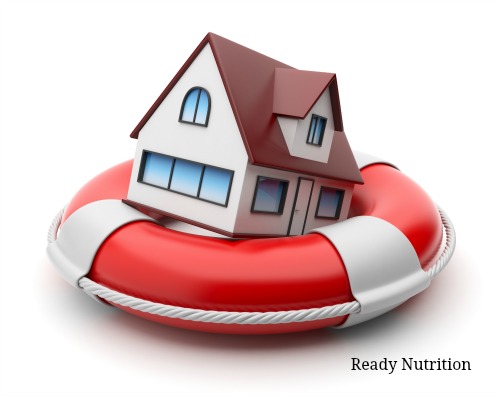
It’s time to prepare for the worst-case scenario with this best-selling preparedness manual
What do I mean by this? I mean for you to specifically identify all the needs of each of your family members and begin acquiring them. Family members have varying needs depending on age and physical condition. Now is the time to ensure you have all the meds you need and the vitamins you will need when the SHTF. Allow me to sound the personal “trumpet” that I have been sounding throughout the years and in many articles:
You guys and gals need to get into good physical shape: it cannot be overemphasized.
7 Critical Components of a Prepared Home
That being said, how do you start? It is simple enough if you just insert a measure of organization into it. Let’s do it, shall we?
- Start by identifying family members who have special needs and/or ongoing, long-term treatment in terms of medication. Examples of conditions can be Type I Diabetics, Blood Pressure/Circulatory patients (meds such as Calcium Channel blockers, etc.), and family members with respiratory compromise (such as COPD, or severe, chronic asthma).
- Make a chart/sheet for each family member and identify what they need: The correct medicine, the amount needed/dosage, the quantity that is on hand, and a plan to attain more of it. BE SPECIFIC! Accuracy is critical: you cannot afford a “transposition error” either in dosage or in the name of the med. “Flexiril” and “Flagyl” should never be confused, for example. One extra “zero” at the end of a dosage could mean death; one zero “short” could mean substandard, inadequate dosage.
- Shop the sources: Price is almost as important as quality…because you will need quantities. Many items can be purchased at discount stores. Make sure you have these 50 items as the basis for your medical supplies. Once you have these, then you can begin to combine your medical supplies to make first response packs for faster medical attention when emergencies occur. Check out all the discount pharmacies that you can and do your research. Also, convince your happy, Hallmark-Card family physician to write these extra prescriptions for you. If he or she won’t do it? DX’em. That’s an Army term: meaning dump/discard them. If you don’t use the stones now, you won’t use them when the SHTF.
- Pet antibiotics: Yes, “protect the pets,” as I’ve explained in other articles. Pet amoxicillin, pet erythromycin, pet Praziquantel (Biltricide). All of these “goodies” and more are available…to keep those “pets” readily supplied with medicine. ‘Nuff said there.
- Vitamins/supplements: Concentrate on the multi-vitamins, and others that are crucial, such as Vitamin C. Again, you need to be sharp when it comes to quality and quantity. Never sacrifice quality for quantity, except if the comparable product is so close to the “top dog” that the difference is negligible.
- Herbal/Naturopathic supplies: Here is where your research is going to be critical. DO NOT EXPECT TO BE “SPOON-FED” INFORMATION, especially by your photo-frame-phony-photo family physician. You have to assess on your own what herbs will do the backup for your family member’s (or your) needs if the med supply dries up or is unavailable. There’s a secondary reason: you need to learn and memorize these herbs “cold,” because you may have to scrounge for them as well…in a ruined, burned-out health food concern, or out in the wild with wild-crafting.
- OPSEC: Don’t allow anyone outside of the immediate family (and even with them…screen ‘em!) to know about your medicines. You need to safeguard them in protective containers that will safeguard them from elements and secret them from the eyes of marauders or other jerks that will pillage them.
Now is the time to get all of this stuff done. You are responsible in the end for taking care of yourself and your family. Do not procrastinate. You may not have a perfect example to follow, but you can allow common sense, savvy, and street smarts to guide you in the path you need to pursue. Don’t put off until tomorrow what you can do today. The “bad days” will come upon us in an instant. Less than an instant. Fight that good fight, and stock up on those supplies you’ll need to take care of your family now…because you won’t be able to on the day after it hits! JJ out!
This article was originally published at Ready Nutrition™ on July 14th, 2017







The animal meds suggestion is a really good one. If we ever lose access to regular medical facilities, then it’s going to be nearly impossible to get access to antibiotics.